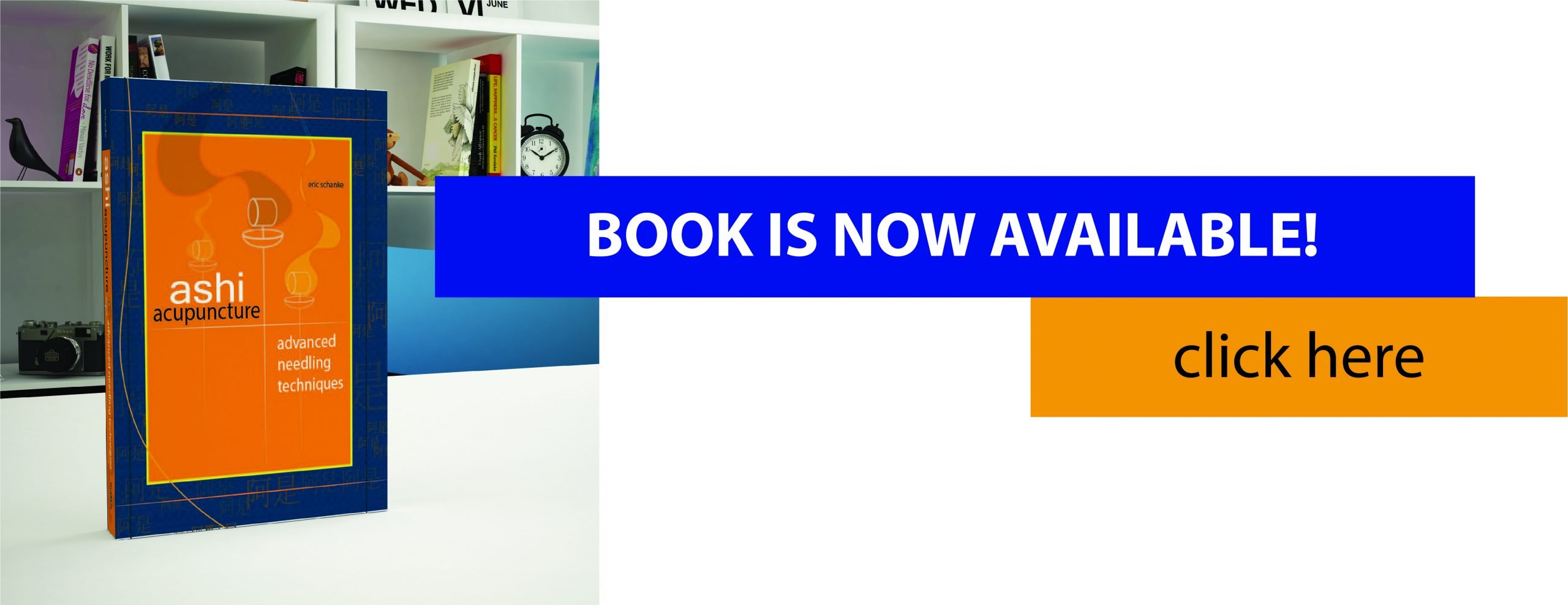Huang Di In Michael Turk’s Library
On May 31, 2014, I met with my mentor Michael Turk in his enviable library! With his help, I finalized my version of the first paragraph of the 13th chapter of the Huang Di Nei Jing Ling Shu. We also consulted other translations listed in the endnotes that influenced my rendition.
Ling Shu 13, titled Jing Jin, is unique in this ancient medical classic because it contains symptoms, diagnosis, and treatment in a concise style. I wish more of the Nei Jing was like that!
What are the Jing Jin (經筋)? Jing is the same term as is used in Jingmai (經脈) see my article Read Your Fing Textbooks for a discussion of the Jingmai. Jin (筋) is usually translated as tendon or muscle (but the character Ji 肌 is the term used medically for muscle tissue today) . Jin (筋) has the radical for bamboo on top, the radical for flesh on the lower left side, and the radical for power/strength on the lower right.
Jing Jin Paragraph One
The Jing Jin chapter contains 13 paragraphs; this is the original Chinese text of paragraph one.
足太陽之筋,起於足小趾,上結于踝,邪上結于膝,其下循足外側,結于踵,上循跟,結於膕;其別者,結于腨外,上膕中內廉,與膕中并上結于臀,上挾脊上項; 其支者,別入結于舌本;其直者,結于枕骨,上頭,下顏,結于鼻;其支者,為目上網,下結于頄;其支者,從腋后外廉結于肩髃;其支者,入腋下,上出缺盆,上 結於完骨;其支者,出缺盆,邪上出于頄。其病小趾支跟腫痛,膕攣,脊反折,項筋急,肩不舉,腋支缺盆中紐痛,不可左右搖。治在燔鍼劫刺,以知為數,以痛為 輸,名曰仲春痺也
My English Rendition
Foot Tai Yang’s tendon, begins at the little toe, ascends to knot at the ankle, pathogens rise to knot at the knee, its lower part follows the outside of the foot, knots at the heel, ascends from the heel, knots at the popliteal fossa; another branch knots at the outside of the calf, ascending vertically from the inner center of the popliteal fossa, the popliteal fossa is knotted above with the buttocks, ascending it clings to the spine up to the nape; a branch enters to knot at the root of the tongue; vertically it knots at the occiput, ascends to the head, descends to the face, knots at the nose; a branch makes a network above the eye, descending it knots at the cheek; a branch from the back of the armpit knots at the shoulder bone; a branch enters the armpit below and exits above at ST 12 (or the supraclavicular fossa) ascending it knots at GB 12 (or the mastoid); a branch exits ST 12, pathogens exit above towards the cheekbone. Its diseases are swelling pain on the branch from the small toe to the heel, popliteal spasms, the spine twisted or bent, irritated neck tendons, shoulders can’t be raised, pain of the branch from the armpit to ST 12, can’t move the left and right. Cure with Fan Zhen Jie Ci (literally “burn needle plunder stab”, I’ll devote a blog post to this term later!) Use wisdom to know the amount of treatment, use the painful points, it is called spring bi.
[1] The Canon of Acupuncture, Ki Sunu, O.M.D., Ph.D.
[2] Ling Shu or The Spiritual Pivot, Wu Jing-Nuan
[3 ] Huang Di Nei Jing Ling Shu, Henry Lu
 Ashi Acupuncture – Education and Training Acupuncture and dry needling information, training and education. Medical based acupuncture with an emphasis on anatomy and technique.
Ashi Acupuncture – Education and Training Acupuncture and dry needling information, training and education. Medical based acupuncture with an emphasis on anatomy and technique.

